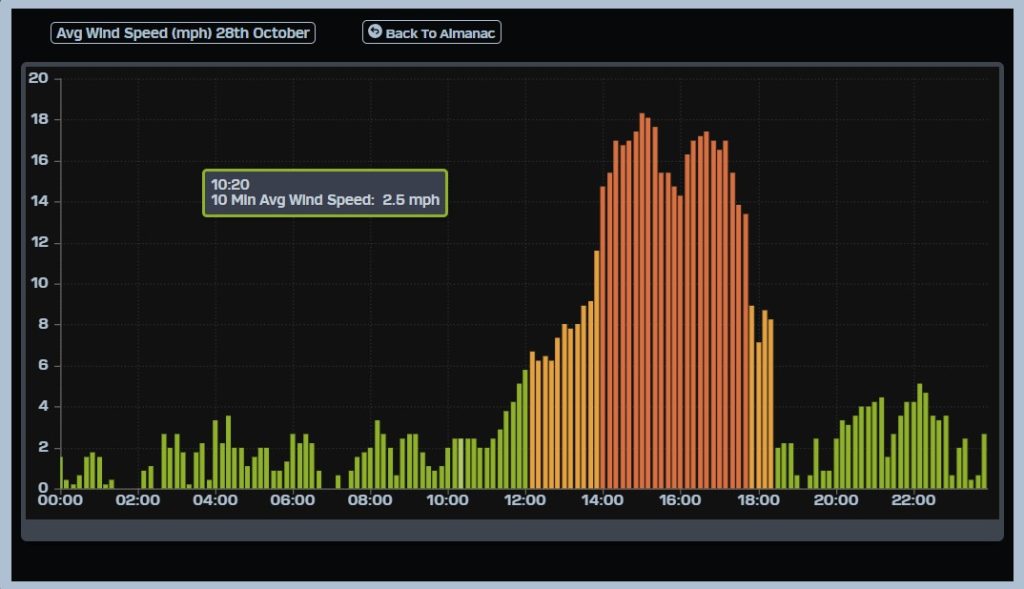¡Buenos dias! An overnight satellite pass measured NNW winds of 10-15 knots over the Sea of Cortez just east of Cerralvo. While the latest numerical model forecasts show the background flow will be less than we saw yesterday, it now appears that there will still be enough this afternoon to help trigger our local wind machine. Mid-level clouds this morning are forecast to move off to the north by around midday, so we should get a substantial thermal boost as well. Surface high pressure centered over the Pacific Northwest of the U.S. this morning is forecast to build quickly southeastward into the 4-corners area on Tuesday and tighten the surface pressure gradient over BCS. With full sunshine expected on Tuesday, we should see our thermal in fine form (see nerd note below). Just enough north flow should last into Wednesday to give us one more rideable day, then the surface pressure gradient will likely become weak, leaving us with light winds Thursday into Friday. Long-range model forecasts show a weak ridge of high pressure may form just to our north, with some north background flow possibly returning Saturday and Sunday.
- Today…Some morning clouds then becoming mostly sunny. North wind 16-18 mph.
- Tuesday…Sunny. North wind 16-20 mph.
- Wednesday…Sunny. North wind 16-18 mph.
- Thursday…Sunny. East wind 8-10 mph.
- Friday…Mostly sunny. Northeast wind 10-12 mph.
- Saturday…Mostly sunny. North wind 16-18mph.
- Sunday…Mostly sunny. North wind 16-18mph.
Nerd Note: Several of you have asked if the very green desert we have now, especially compared to last year, will affect our local thermal this year. The answer is yes, but it remains to be seen how much. It is well documented that a green surface stays substantially cooler than a bare surface. This is primarily due to a process called transpiration, where liquid water is evaporated from plant tissues. A phase change from liquid water to water vapor requires a large amount of heat, and as transpiration occurs, it tends to cool the surrounding air and with cooler air, our local thermal would be weaker. That’s the science of it, and it’ll be interesting to see how significant the effect is here. So far so good, as the thermal boost to the background flow we saw yesterday was very similar to what we saw last season.

